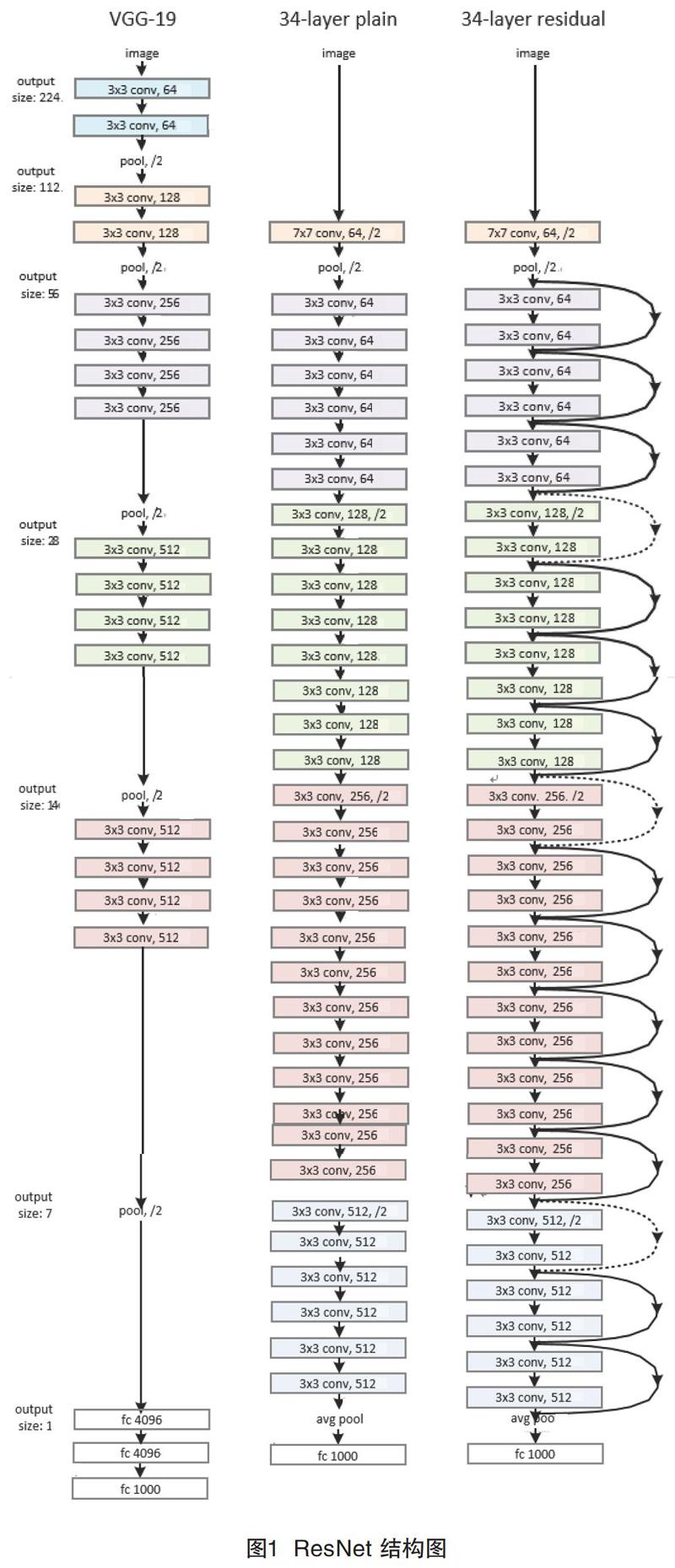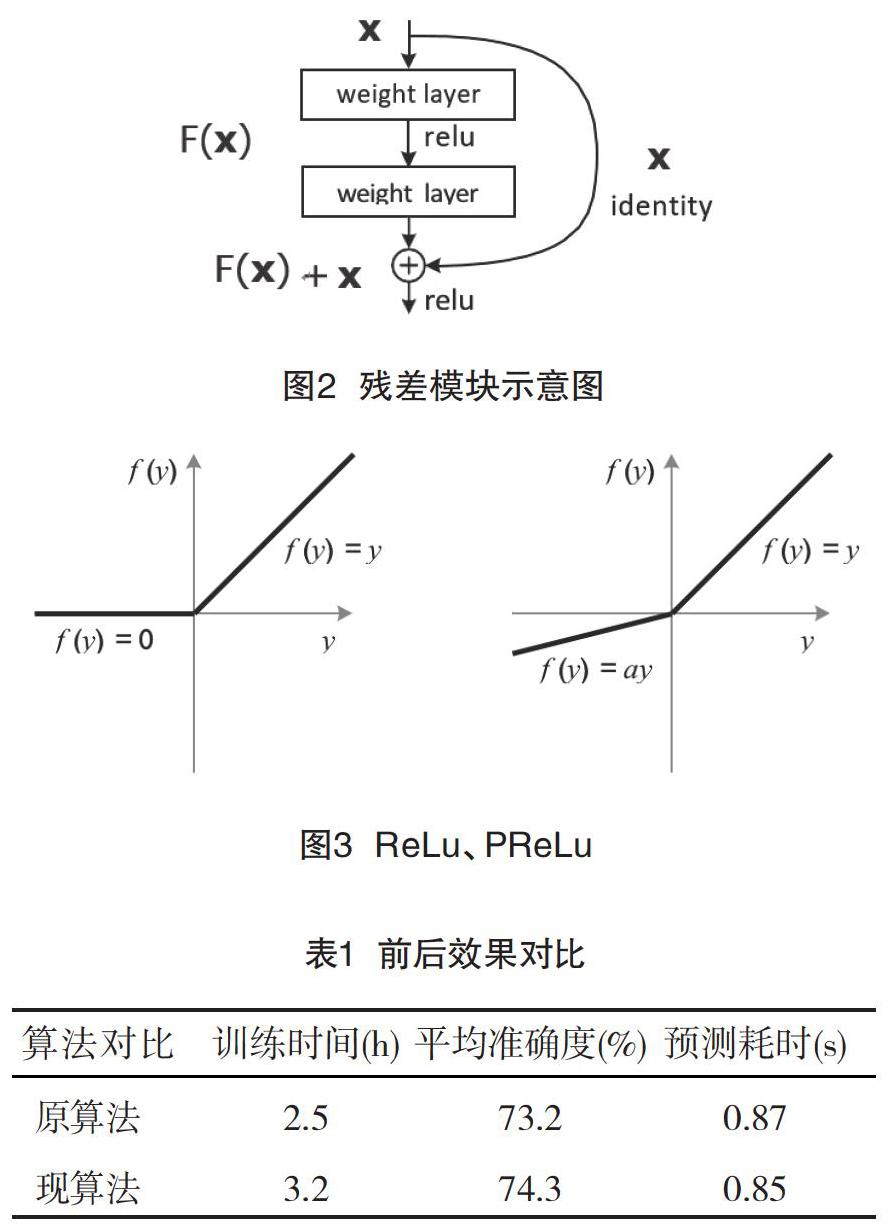基于ResNet50的人脸识别模型
谢鑫


摘 要:该文采用卷积神经网络(Convolutional Neural Networks, CNN)进行人脸识别模型开发,现有深度卷积神经网络的模型,提出了改进的Faster R-CNN目标检测模型与ResNet50结合的方法进行识别。ResNet50网络大小适中,对算力要求不高,故可以采用训练耗时较长的杜鹃算法(Cuckoo Search,CS)对原有的网络训练方法进行一定变更,在CelebA上进行训练与预测。与未改进的ResNet50相比,其训练时间有所增加但预测准确率上升1.7%。
关键词:ResNet50 Faster r?cnn Cuckoo Search 人脸识别
中图分类号:TP391.41 文献标识码:A 文章编号:1672-3791(2020)12(b)-0009-03
Abstract: This paper uses Convolutional Neural Networks (CNN) for face recognition model development. For existing deep convolutional neural network models, an improved Faster R-CNN target detection model combined with ResNet50 is proposed for recognition. The ResNet50 network is of moderate size and does not require high computing power. Therefore, the Cuckoo Search (CS) algorithm, which takes a long time to train, can be used to make certain changes to the original network training method, and train and predict on CelebA. Compared with the unimproved ResNet50, its training time has increased but the prediction accuracy has increased by 1.7%.
Key Words: ResNet50; Faster r?cnn; Cuckoo Search; Face recognition
Yann LeCun于1989年將CNN用于手写数字识别, 近年来CNN也被广泛用于人脸识别领域[1]。而在人脸识别领域除CNN外目前还有SVM、小波变换、图像二值化等检测方法[2]。
1 原有网络与初始化方法
HE Kaiming等人在2015年提出ResNet[3]系列网络,结构图见图1。ResNet提出了一种能有效降低训练过程中梯度消失和梯度爆炸问题的残差模块,其结构图见图2。
针对非线性激活函数ReLU、HE Kaiming等人提出了一种权值初始化方式和另一种非线性激活函数 PReLU[4],其权值计算方式为,,式中为PReLU函数第三象限的斜率;n为通道数。具体见图3。
2 本文变化
用CS[5]代替常用的随机梯度下降法,采用式xi(t+1)=xi(t)+y(λ)迭代计算新解,式中,为可根据实际需要调整的步长参数,常取为1;xi为每只杜鹃(即权值)的值,t为迭代次数,⊕为逐项相乘。其迭代步骤具体如下。
(1)输入目标函数,并初始化n个鸟巢xi(i=1,2,3…,n)。
(2)当t<最大迭代次数时,通过Lévy figthts随机选择一个杜鹃鸟,计算其适应度Fi,并在它周围任意选取一个鸟巢j。
(3)计算Fj,如果Fi>f Fj就将j作为新解。
(4)以预设的比例pa丢弃较坏的鸟巢并生成相同数目的新的鸟巢。
(5)t+1并重复第二步。
在CelebA[6]上进行验证和训练,结果见表1。
3 结语
CS收敛速度小于原算法,但可以取得更好的识别率。结合多次试验,发现CS较不容易出现梯度爆炸问题,原生算法在调参时容易陷入梯度消失或爆炸问题中。
参考文献
[1] ZHAO Zhongqiu, ZHENG Peng, XU Shoutao, et al. Object detection with deep learning: A review[J].IEEE transactions on neural networks and learning systems,2019,30(11):3212-3232.
[2] KAUR P, KRISHAN K, SHARMA SK, et al. Facial?recognition algorithms: A literature review[J]. Medicine, Science and the Law,2020,60(2):131-139.
[3] HE Kaiming, ZHANG Xiangyu, REN Shaoping, et al. Deep residual learning for image recognition[C]//Proceedings of the IEEE conference on computer vision and pattern recognition.2016:770-778.
[4] HE Kaiming, ZHANG Xiangyu, REN Shaoping, et al. Delving deep into rectifiers: Surpassing human?level perfor? mance on imagenet classification[C]//Proceedings of the IEEE international conference on com? puter vision.2015:1026?-1034.
[5] ZHANG Maoqing, WANG Hui, CUI Zhihua, et al. Hybrid multi?objective cuckoo search with dynamical local search[J].Memetic Computing, 2018,10(4):199-208.
[6] LIU Ziwei, LUO Ping, WANG Xiaogang, et al. Deep learning face attributes in the wild[C]//Proceedings of International Conference on Computer Vision (ICCV).2015.

